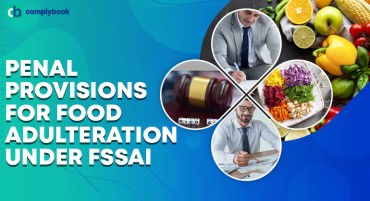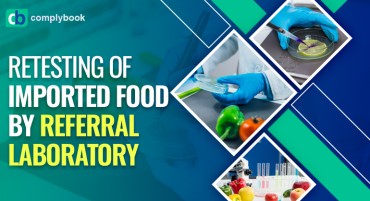

Highlights of 20 Trillion Economic Relief Package
The Indian Prime Minister in his fifth address since the Covid-19 outbreak announced a much-awaited Rs 20-trillion stimulus package for India’s economy. Prime Minister Modi said the Rs 20 trillion economic package was for the country's farmers, labourers, honest taxpayers, cottage industries and MSME. The Prime Minister also urged the people of the country to start buying locally made products and also that Indians need to be "vocal about local products.
The package will be spent through direct cash transfers and food security measures for poor households. Small business owners, daily wage earners and low-income households are said to be the most vulnerable during the lockdown and the government does not want anyone to remain hungry or go without money in hand.
Not all of the Rs 20 trillion comprise extra fiscal expenditure. They contain extra expenditures, loans, loan guarantees and other forms of commitments by the Reserve Bank of India (RBI) and the government.
The package is seen as a government effort to check the world's fifth-largest economy moving towards its first full-year contraction in four decades. As per the estimates, lockdown may have led to around twelve crore people losing jobs in April and consumer demand evaporating.
The Indian Prime Minister in his speech said that India's self-reliance is based on five pillars which include the following as below:
- Economy
- Infrastructure
- Our system
- Demography
- Demand
The Rs 20 lakh crore relief package announced by Prime Minister Narendra Modi addresses four key components which are as follows:
- Land
- Law
- Liquidity
- Labour
The areas targeted by the economic relief package are the following as below:
- MSMEs
- Cottage Industries
- Middle Class
- Labourers and farmers
- Industry
The economic relief package may include the following as below
- Loan guarantee for MSMEs
- Financial support for migrant workers
- Wage support for workers
- Support for construction and housing sector
- Tax incentives to make production competitive at the local level (FM indicated it in her tweet)
- Announcement for the tax-paying middle class
- Relief for the aviation sector that is the worst-hit under coronavirus pandemic
- Support for hawkers and vendors
Some of the key highlights of the Economic Relief Package are the following as below:
- The government will contribute twelve per cent from the employer side and twelve per cent from the employee side to Provident Fund accounts. This for those firms where there are less than a hundred employees and ninety per cent of who draw less than fifteen thousand per month in wages.
- In the Prime Minister’s Garib Kalyan Yojana the Finance Minister declared that Ujjwala beneficiaries will get free gas cylinders for three months.
- Collateral free loans will be doubled to Rs twenty lakhs for Self Help Group women, to help around seven crore women.
- Under Pradhanmantri Garib Kalyan Yojana, five kg wheat or rice will be given for free for the next three months. Besides, One kg pulse available regionally will also be given for free to Eighty crore people.
- For MSMEs, the package distributed Rs three trillion for collateral-free loans. The loans have a four-year tenure with no payments due for one year. It also allots rupees twenty thousand crores for subordinate debt focused at helping currently stressed MSMEs
- A package that will instantly help those affected directly, those migrants workers, rural and urban poor through cash transfers as well as food security measures.
- A fifty lakh rupees per person insurance for medical personnel.
- An immediate release of Rs two thousand to directly benefit around eight crore farmers.
- Every person will get seven kg ration per month for the next three months, including rice at cost of Rs thee per kg, instead of rupees thirty-seven per kg and wheat at a cost of Rs two per kg, instead of Rs twenty-seven per kg.
- Because of Covid-19 pandemic, EPFO schemes regulation will be amended to enable the non-refundable advance of seventy-five per cent of three-month wages or the standing amount, whichever is lower. This will benefit 4.8 crore workers.
- To give a sufficient supply of cooking gas, for the next three months 8.3 crore BPL families will get free cylinders.
- All Renewable Energy projects under implementation will be provided with an extension of time taking into consideration the period of lockdown and time needed for remobilisation of the workforce.
- Cabinet has permitted the continuation of Rebate of State and Central Taxes and Levies (RoSCTL) from 1st April 2020 onward until such duration that the scheme is merged with Remission of Duties and Taxes on Exported Products (RoDTEP).
- The first phase of Census 2021 and the updation of NPR, which was to begin on several dates decided by the UT/State governments beginning 1st April 2020 and several related field activities, are postponed until further orders.
- The Cabinet Committee on Economic Affairs has issued its approval for continuation of the procedure of recapitalisation of Regional Rural Banks (RRBs) by giving minimum regulatory capital to RRBs for another year beyond 2019-20, i.e., up to 2020-21 for those RRBs which are not able to maintain minimum Capital to Risk-weighted Assets Ratio (CRAR) of nine per cent, according to the regulatory norms prescribed by the Reserve Bank of India (RBI).



